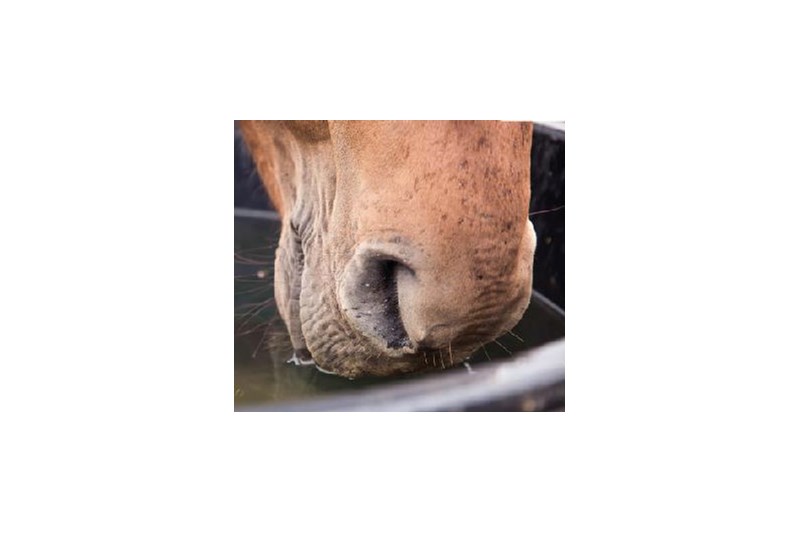There are six ‘essential’ nutrients in the horse’s diet – yet water is easily the most important. Hydration is the process of replacing lost fluid, and your horse’s body needs to be fully hydrated with water to function properly. Dehydration can be potentially life-threatening, so good hydration is vital. Lisa Elliott, MSc – nutritionist at Castle Horse feeds, explains more.
Neither we nor our horses could survive without water. Horses can survive up to 90 days without food but without water this drops to seven. In mature horses, total body water comprises 61-72% of bodyweight (BW), demonstrating just how important water is within the body. Water is directly or indirectly involved with virtually every physiological process essential to life. Full water hydration is vital for optimal body function and if a horse becomes even a little dehydrated, that function becomes compromised.
Water balance and requirements
Good hydration is all about balance. Within the body, a balance must be reached between water input and water output. Water input comes from drinking water, feed and metabolic processes. All feeds contain water and the water content depends on the source of that feed. Hay and cereals, for example, typically contain 10-15% moisture so contribute very little to water input, but fresh grass can almost satisfy requirements! Metabolic water is generated from the metabolism of carbohydrates, fats and proteins and contributes about 11-13% of daily water requirements. Water output or ‘loss’ is a result of faeces, urine, sweating and respiration. Daily water requirements are around 5 litres per 100 kilogram of body weight (BW) but strenuous work in hot conditions can increase this significantly. Water intake from feed and drinking must be sufficient to replace what is lost and optimise hydration.
Water Intake
Water intake is essential to keep the body functioning well and avoid the detrimental effects of dehydration. Water intake and the amount a horse will drink is influenced by body size/weight, diet, workload, age, illness or disease and ambient temperature so it’s important to consider these factors to make sure your horse receives the right amount for optimal hydration. In winter horses are naturally inclined to drink less, so it’s important to be aware of this and ensure they are getting as much as possible. Feeding plenty of forage is great because water is released from forage digestion, building up a reservoir in the hindgut. Hay and drier forages will also help stimulate thirst for good water intake. In the summer months, increased exercise and warmer temperature will mean horses need to drink more, so it’s equally important to ensure your horse has good access to water.
Salt and Electrolytes
Salt is an essential for good hydration as it stimulates thirst and promotes body water equilibrium, so it’s important that the diet is meeting sodium needs. Adding 1-2 tablespoons of salt (sodium chloride) daily to feed is ideal, but in warmer weather this should ideally be increased to at least 3 or 4 to ensure your horse drinks plenty.
When horses sweat, they lose water plus the key mineral salts or ‘electrolytes’ - sodium, potassium and chloride. Working in hotter weather will induce more sweating, but most horses with access to water, salt and good-quality forage, will be able to replace these losses.
However, if your horse shows increased sweating working in hotter weather or is working harder, it’s worth considering additional electrolytes. Electrolytes can be offered before and after exercise and made using a combination of table salt and Lo-salt for optimum fluid balance.
Water should always be the primary nutrient for horses. Knowing how much they need, what affects water intake, and providing essential salts to encourage regular drinking will help make sure they stay hydrated and healthy.
If you have any questions about nutrition for your horse or pony, email theteam@castlehorsefeeds.com or call 01497 570345. See www.castlehorsefeeds.com for further information and to sign up for free nutrition news and insights.
First published in Carriage Driving August 2019
